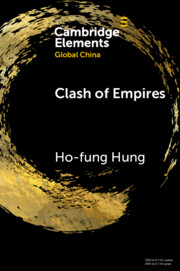Element contents
Clash of Empires
Published online by Cambridge University Press: 18 March 2022
Summary
- Type
- Element
- Information
- Series: Elements in Global ChinaOnline ISBN: 9781108895897Publisher: Cambridge University PressPrint publication: 05 May 2022
References
- 27
- Cited by



